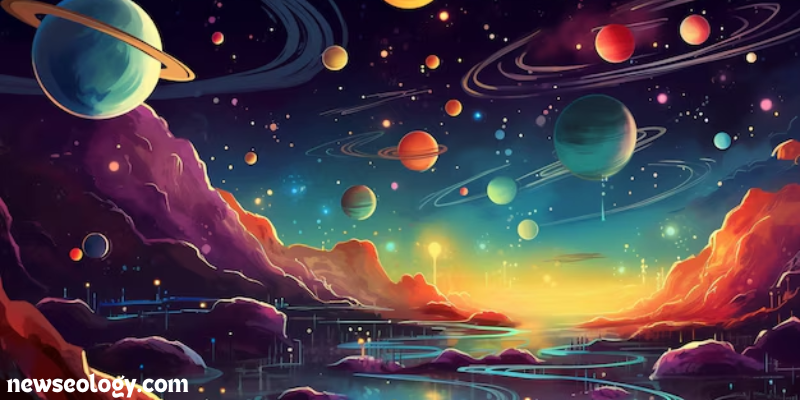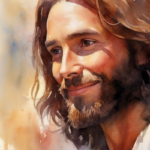Space Art Inspirations Painting the Stars, Planets, and Beyond

Space art is a fascinating blend of creativity and science that offers a visual exploration of the cosmos, portraying stars, planets, galaxies, and the infinite expanse beyond our world.
Through various mediums, space artists craft stunning images that capture the imagination and inspire curiosity about the universe.
The history, techniques, themes, and inspirations behind space art, diving into the works of notable artists and examining how this genre continues to evolve.
The Origins of Space Art: From Ancient Astronomy to the Space Age

Space art, while deeply rooted in modern space exploration, has origins that stretch back to ancient times.
Early civilizations, fascinated by the night sky, often depicted celestial bodies in their art.
The alignment of the stars, phases of the moon, and the position of planets were not only seen as religious symbols but also became a source of artistic inspiration.
The true beginning of what we now recognize as space art occurred in the mid-20th century with the advent of the space race.
Artists like Chesley Bonestell used their imaginations and the latest scientific knowledge to create stunning visuals of space travel and extraterrestrial landscapes.
These early works helped shape public perception of space exploration, fueling dreams of landing on the Moon and exploring other planets.
The Role of Science and Imagination in Space Art
What sets space art apart from other forms of visual art is its deep connection to science.
Many space artists collaborate with scientists, astronomers, and engineers to ensure their depictions are grounded in reality.
However, because so much of space remains unknown or unexplored, imagination plays a crucial role.
For instance, we have detailed images of planets like Mars, thanks to missions by NASA and other space agencies, but artists often add speculative elements to their work, imagining what the planet might look like from different perspectives.
This balance between scientific accuracy and artistic interpretation makes space art uniquely compelling, allowing viewers to wonder what lies beyond the known universe.
Depicting the Stars: Representing the Cosmic Depths
One of the most popular subjects in space art is the stars. Artists attempt to capture the immense beauty and mystery of the night sky, often representing stars as distant, shimmering points of light or incorporating them into swirling nebulae.
The challenge in depicting stars is conveying their scale and distance, as well as the awe-inspiring vastness of space.
Using techniques like contrast, color gradation, and texture, artists create starry skies that invite viewers to gaze deeper into the canvas, symbolizing both the mystery and infinite possibilities of the cosmos.
Planets as Art Subjects: From Mars to Distant Exoplanets
Planets are another popular focus in space art. Mars, with its red, dusty landscape, has long been a favorite subject.
Artists explore its canyons, volcanoes, and potential for future human colonization, capturing the spirit of exploration.
Jupiter, with its massive storms and colorful atmosphere, often appears as a backdrop for imaginative works of spacecraft exploring its moons.
Exoplanets, or planets outside our solar system, are a more recent addition to space art.
As scientists discover new worlds beyond our system, artists are imagining what these alien planets might look like—whether they have liquid water, rocky surfaces, or towering ice formations.
Space art gives life to these distant worlds that we’ve only glimpsed through telescopes.
Spacecraft and Human Exploration: Visualizing Future Journeys
Since the space age began, space art has also focused on the vehicles we use to explore the cosmos. From the Apollo missions to the International Space Station, artists have captured the majesty of human space travel.
Renderings of futuristic spacecraft are common in space art, showing how humanity might venture deeper into space.
Some artists imagine spacecraft traveling to distant stars or being stationed on planets we have yet to reach.
This visualization helps fuel public interest in space exploration, making abstract concepts like interstellar travel more tangible and exciting.
Nebulae: Cosmic Clouds of Color and Light
Nebulae are another popular subject in space art. These vast clouds of gas and dust, where stars are born, offer a visual feast for artists.
Nebulae often appear as swirling, colorful clouds in space, with hues ranging from deep blues and purples to bright reds and oranges.
The challenge in painting or rendering nebulae lies in their ethereal nature. Artists use techniques like blending, soft brushes, and translucent layers to replicate the glowing, fluid forms of these cosmic nurseries.
The result is often a breathtaking portrayal of space as both serene and dynamic.
Black Holes and Wormholes: Visualizing the Unknown
Black holes, with their gravitational pull so strong that not even light can escape, represent some of the most mysterious phenomena in the universe. In space art, black holes are often depicted as swirling vortexes, surrounded by luminous disks of matter being pulled into the event horizon.
Wormholes, theoretical passages through space-time, are another favorite subject.
Artists imagine them as tunnels connecting distant parts of the universe, sparking wonder about the possibilities of faster-than-light travel.
These concepts, though rooted in science fiction, provide artists with the opportunity to visually explore ideas that challenge the limits of physics and imagination.
Space Art in Popular Culture: Movies, Video Games, and Music
Space art has had a significant influence on popular culture, from movie posters to video game design. Films like Star Wars, Interstellar, and 2001: A Space Odyssey are iconic for their stunning space visuals.
The influence of space art can be seen in the design of spacecraft, alien landscapes, and futuristic cities, blending the line between science fiction and reality.
Video games, too, draw heavily from space art, offering players the chance to explore fantastical planets and distant galaxies. Games like No Man’s Sky allow users to interact with vibrant alien worlds, often inspired by the work of space artists.
Music, particularly in genres like electronic or ambient, frequently uses space art for album covers, evoking a sense of cosmic wonder and mystery.
Digital Space Art: The Impact of Technology
The advent of digital tools has revolutionized space art, allowing artists to create highly detailed and realistic depictions of the cosmos.
Programs like Photoshop, Blender, and 3D modeling software enable artists to render celestial objects with incredible precision, mimicking the vastness and complexity of space.
Digital space art often combines data from real space missions with artistic interpretation.
For instance, artists might use images from the Hubble Space Telescope as a base, adding their own touches to create even more vibrant and imaginative depictions of galaxies and nebulae.
The digital medium also opens up opportunities for animated space art, where celestial scenes come to life in real-time.
The Future of Space Art: Endless Possibilities
As our knowledge of the universe expands, so too does the potential for space art. With upcoming missions to Mars, plans for space tourism, and the continuous discovery of new exoplanets, artists will have more inspiration than ever.
Advances in virtual reality could take space art to new heights, allowing viewers to immerse themselves in cosmic landscapes or experience distant planets as though they were standing on their surface.
Space art will continue to inspire future generations, connecting humanity to the stars and reminding us of the vast, unexplored frontier beyond our world.
Whether through traditional painting, digital renderings, or immersive virtual experiences, space art will always fuel our imagination, pushing the boundaries of both art and science.
Final Thoughts:
Space art is a window into the infinite, blending scientific discovery with human creativity. Through its portrayal of stars, planets, nebulae, and the mysteries of the universe, it allows us to dream, explore, and contemplate our place in the cosmos.
As technology evolves and space exploration continues, the future of space art holds endless possibilities, ready to inspire generations of stargazers and dreamers alike.
FAQ:
What is space art?
Space art is a genre of visual art that focuses on depicting scenes from outer space, including stars, planets, galaxies, and imaginary extraterrestrial landscapes. It combines elements of scientific accuracy with creative interpretation.
Who are some famous space artists?
Some notable space artists include Chesley Bonestell, Robert McCall, and Ludek Pesek. These artists have contributed significantly to popularizing space art, especially during the space race era.
Is space art scientifically accurate?
While space art is often inspired by real astronomical phenomena, it may not always be entirely scientifically accurate. Some artists choose to emphasize imagination, especially when depicting speculative worlds or theoretical concepts like wormholes.
What mediums are used in space art?
Space art can be created using traditional mediums like oil paints, watercolors, or pastels, as well as digital tools like Photoshop, 3D modeling software, and other graphic design programs.
How has space exploration influenced space art?
Space exploration has played a massive role in inspiring space art. Images from telescopes, space probes, and satellites provide real data that artists use to create their interpretations of the universe.
Mission photos from the Apollo program, Mars rovers, and the Hubble Space Telescope have especially impacted space artists.
Can beginners create space art?
Absolutely! Space art is accessible to anyone with an interest in the cosmos. Beginners can start with simple paintings of starry skies, planetary landscapes, or nebulae and gradually explore more complex themes as they gain experience.
What role does digital technology play in space art?
Digital technology allows artists to create highly detailed and realistic space art. Programs like Blender, Photoshop, and other 3D tools enable artists to visualize entire galaxies, planets, and futuristic space stations with incredible accuracy and creativity.
How does space art influence pop culture?
Space art has a huge impact on pop culture, influencing films, video games, music, and even fashion. Movies like Interstellar and Star Wars, as well as video games like No Man’s Sky, have all been shaped by space art aesthetics.
What is the connection between space art and science fiction?
Space art and science fiction are deeply intertwined. Many science fiction novels, movies, and TV shows use space art to visualize distant worlds, alien species, and futuristic space travel.
Why is space art important?
Space art sparks curiosity about the universe and helps people visualize what lies beyond Earth. It can inspire interest in astronomy, space exploration, and science, connecting humanity to the cosmos in creative and engaging ways.
Bounce Points:
Vivid Imagery: Use compelling descriptions of stars, planets, and galaxies to captivate readers and paint a visual journey through the cosmos.
Creative and Scientific Balance: Highlight how space art uniquely blends imagination with real astronomical data, creating visually stunning yet scientifically rooted pieces.
Historical Significance: Mention the evolution of space art from ancient civilizations to the modern space age, establishing its long-standing appeal.
Iconic Artists: Reference famous space artists like Chesley Bonestell and Robert McCall to provide credibility and showcase influential pioneers of the genre.
Variety of Mediums: Discuss different art mediums—traditional painting, digital art, 3D modeling—to engage diverse readers with various creative interests.
Connection to Space Exploration: Emphasize the role of real space missions and NASA imagery in inspiring artists, making the genre even more relatable to space enthusiasts.
Pop Culture Appeal: Leverage references to movies, video games, and music influenced by space art to appeal to fans of science fiction and digital media.
The Mystique of Space: Focus on the mysterious and awe-inspiring nature of space (e.g., black holes, nebulae) to maintain readers’ sense of wonder and curiosity.
Future of Space Art: Discuss how advances in technology (VR, 3D modeling) and upcoming space missions could shape the future of the genre, keeping the content forward-looking.
Inspirational Tone: Position space art as a way to inspire imagination and connect with the universe, encouraging readers to explore their creativity and curiosity.







